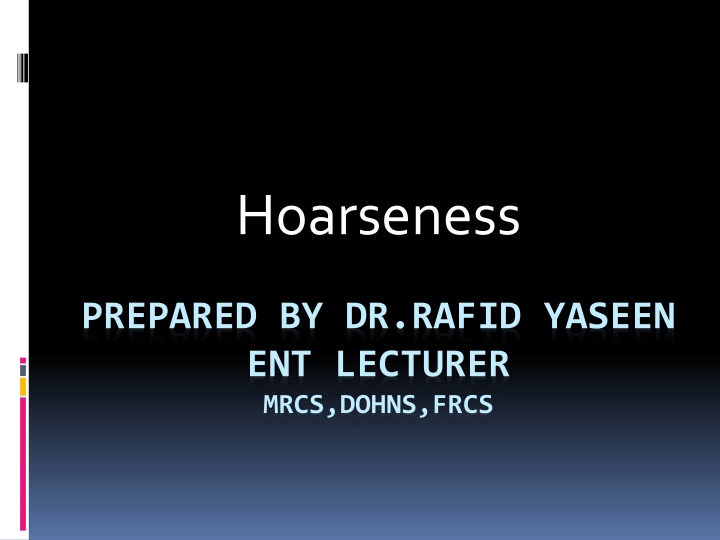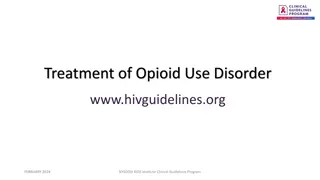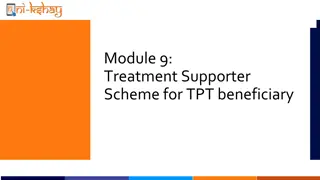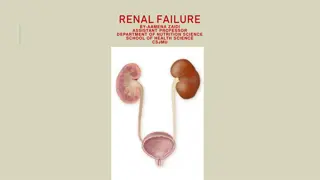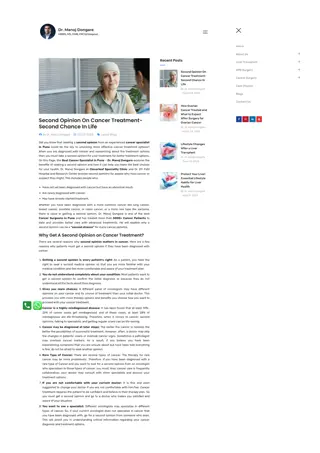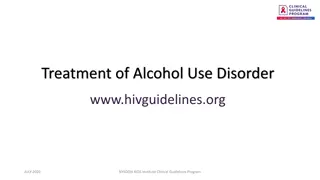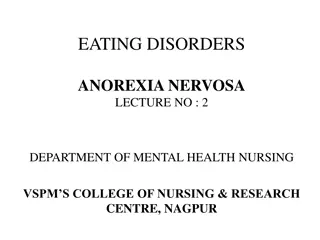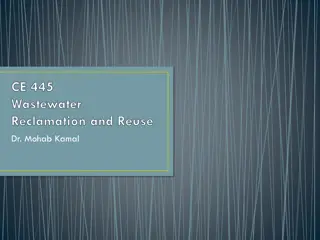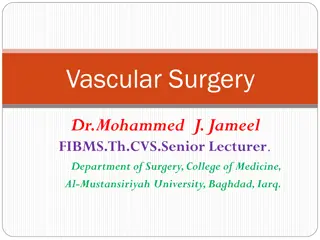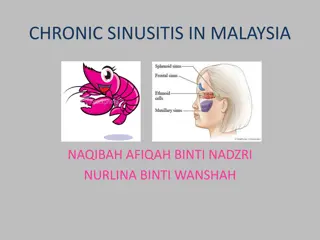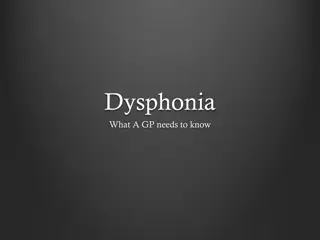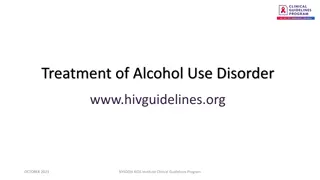Hoarseness: Causes, Clinical Approach, and Treatment Options
Hoarseness, or roughness of voice, can result from various factors affecting vocal cords' function. Inflammation, structural, neuromuscular, and muscle tension imbalances are common causes. Clinical assessment by a laryngologist and voice therapist is crucial for accurate diagnosis and treatment. Supportive measures like voice rest, analgesia, and steam inhalations are often recommended. Learn about different presentations like acute laryngitis and appropriate management strategies.
Download Presentation

Please find below an Image/Link to download the presentation.
The content on the website is provided AS IS for your information and personal use only. It may not be sold, licensed, or shared on other websites without obtaining consent from the author.If you encounter any issues during the download, it is possible that the publisher has removed the file from their server.
You are allowed to download the files provided on this website for personal or commercial use, subject to the condition that they are used lawfully. All files are the property of their respective owners.
The content on the website is provided AS IS for your information and personal use only. It may not be sold, licensed, or shared on other websites without obtaining consent from the author.
E N D
Presentation Transcript
Hoarseness PREPARED BY DR.RAFID YASEEN ENT LECTURER MRCS,DOHNS,FRCS
Hoarseness: is defined as roughness of voice resulting from variations of periodicity and/or intensity of consecutive sound waves. for production of normal voice , vocal cords should: 1-be able to approximate properly with each other. 2-have a proper size and stiffness . 3-have an ability to vibrate regularly in response to air column. Any condition that interferes with the above functions causes hoarseness. A-loss of approximation like in vocal cord paralysis. B-size of the cord like in oedemaof the cord or tumour, may be decrease in size like post partial excision or fibrosis. C-stiffness ; may be increase like in fibrosis, spastic dysphonia.
Aetiology : 1- inflammation. 2- structural or neoplastic 3- neuromuscular. 4- muscle tension imbalance.
Clinical approach : The patient should be assessed in a voice clinic where a voice therapist and a laryngologist are present. the laryngologist in the initial assessment of the patient is to formulate a diagnosis or differential diagnosis , exclude serious underlying causes, determine the impact of the condition on quality of life and provide the information about treatment options and prognosis .
1- history: less than 2 weeks , pyrexia ,sore throat ,URTI symptoms , examination is not significant ---- acute laryngitis * Acute laryngitis: inflammation of the larynx may occur in isolation or as a part of infective process affecting the whole of the respiratory tract. There may be secondary infection
with streptococci and staphylococci. Signs and symptoms: 1- dysphonia. 2- dysphagia ,pain on phonation. 3- malaise, pyrexia. 4- oedema, erythema of vocal cords.
Treatment: supportive measures: 1- voice rest. 2- simple analgesia. 3- steam inhalations. 4- simple cough suppressants. 5- if necessary give penicillin v 500mg q6hr for 1 week.
2-history: lasted more than 3 weeks ---- vocal cord lesion if unilateral : 1- laryngeal cancer. 2- vocal polyp. 3- vocal granuloma. 4- papilloma. * vocal cord polyp: usually unilateral ,pedunculated lesion, associated with smoking and voice abuse, most common between middle and anterior thirds of vocal cord.
Histology: shows deposits of hemosiderin and iron within the lamina properia. Treatment : surgical excision, postoperative speech therapy, avoidance of the risk factors.
* Vocal cord granuloma: it arises posteriorly, adjacent to the vocal process and not the vibrating segment of the vocal cord,thus the dysphonia may not be a significant feature. Usually associated with trauma from the intubation - more common with men with GORD. - it arises exposed arytenoid cartilage - RX ---conservative.
Papilloma: it is a disease caused by development of papilloma in larynx, - it is caused by HPV 6,11. - malignant transformation is rare. S&S: hoarseness, stridor, chronic cough, respiratory infections, FTT. IX: flexible endoscopy microlaryngoscopy with biopsy. RX: 1- surgical excision. 2- adjuvant therapy: a- intralesional cidofovir. B- systemic alpha interferon.
* Laryngeal carcinoma: CA Larynx constitutes 2.63% of all body cancers. It is ten times more common in males than in females , it is mostly seen in the age group of 40-70 years but younger age group may occasionally be affected. Risk factors: -smoking . -alcohol . -previous neck radiation. -genetic and familial tendency. -occupational exposure to asbestosis,mustard gas??
Histopathology : about 90-95% of laryngeal CA is SCC with various grades of differentiation. Cordal lesions are often well differentiated while supraglottic ones are anaplastic. The rest 5-10 % of lesions include verrucous CA, spindle cell CA , malignant salivary gland tumours , and sarcomas. 1- Supraglottic CA : it is comprises about 47% , it is often silent . Hoarseness is a late symptom. Throat pain , dysphagia and referred pain in the ear or mass of lymph nodes in the neck may be a presenting features. Wight loss respiratory distress , halitosis are late features.
2- Glottic tumour: (50% ): hoarseness is most common feature.early presentation , causes stridor and laryngeal obstruction. 3- subglottic tumour: the earliest presentation may be stridor or airway obstruction, but this is late . Diagnosis of laryngeal CA: 1- History . 2- Indirect laryngoscopy,direct laryngocopy. 3- Flexible fibreoptic or rigid laryngoscopy 4- neck examination. 5- radiology like.: CXR, CT-SCAN , MRI
Treatment of laryngeal cancer : 1- radiotherapy . 2- surgery A- Conservation laryngeal surgery. B- total laryngectomy. 3- combined therapy. Surgery with pre- or postoperative radiotherapy. 4- endoscopic CO2 laser excision. 5- organ preservation.
2- bilateral lesions: 1- reinke s oedema. 2- papilloma. 3- vocal cord nodules. Reinke s oedema: -it is diffuse polypoid changes of the vocal cords secondary to accumulation of fluid in the superficial layer of the lamina properia. - strong association with cigarette smoking and heavy voice abuse. -usually bilateral
RX: 1- stop smoking. 2- speech therapy. If no response then : surgery : cordotomy.
*vocal cord nodules: -affecting children or professional users. - bilateral whitish lesions at the junction of the anterior one third and posterior two thirds of the V.C. -RX : 1- speech therapy. If no response: then microlaryngeal surgery.
Nerve supply of the larynx: recurrent laryngeal nerve : right RLN arises from the vagus at the level of the subclavian artery ,hooks around it and then ascends between trachea and oesophagus . The Left RLN arises from the vagus in the mediastinum at the level of the aorta ,loops around it then ascends into the neck in the tracheo- oseophageal groove. Thus , left RLN longer than RT RLN which makes it more vulnerable to paralysis. Superior laryngeal nerve (SLN): it arises from the inferior ganglion of the vagus , descends behind internal carotid artery and at the level of the greater cornua of hyoid bone , divdes into external and internal branches.
Motor supply: All of the intrinsic muscles of the larynx supplies by RLN except cricothyroid muscle which receives nerve supply through external branch of the SLN. Sensory innervation : above the vocal cords , larynx is supplied by internal branch of the SLN while below the vocal cords by RLN.
3- immobile V.C.: - vc paralysis signifies immobility of the true vc due to disruption of the relevant motor innervation of the larynx. - the long course of the recurrent laryngeal nerve makes it susceptible to injury in a variety of sites. -vc palsy will mean that the patient may have a weak, breathy voice, they may have a poor ineffective cough , and aspiration is common. -any condition that affect the brainstem (CVA,trauma,tumour),will affect the function of the RLN.
- Any systemic neurological or neuromuscular conditions, such as MS,or muscular dystrophy may affect the voice. - Semon s law: in RLN lesions, the abductors paralyse before the adductors. Causes: 1- 1|3 ----idiopathic. 2- 1|3 ----surgery(thyroidectomy). 3- 1|3 ----neoplasia( thyroid, malignant cervical nodes, ca of oesophgus, hypopharynx,or bronchus) aortic aneurysum,TB. Investigations: 1- CT scan from the skull base to the diagphragm. 2- U\S thyroid 3- oesphagoscopy.
Phonosurgery: it is the surgery for restoration and maintenance of the voice it is of many types like 1- microlaryngeal surgery. 2- vocal cord injection. 3- laryngeal framework surgery.
3- Variable + voice abuse comes and goes , GORD no vocal cord lesion muscle tension dysphonia. MTD : it is group of conditions characterized by an imbalance of the synergist and antagonist muscles affecting the vocal cords position and tensioning relative to one another and also the position of the larynx in relative to the rest of the vocal tract..
